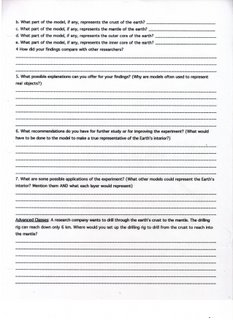Wednesday, 31 January and Thursday, 1 February, 2007
Using information from the novel A Journey to the Center of the Earth, classroom discussions, internet access, and laboratory experiments:
Students should be able to:
-read a work of fiction to determine the science facts it contains.
-identify rocks by their characteristics.
-present the team work on rocks and their characteristics.
After collecting and reviewing home learning 4, students answered a question for do now as a quick write. They were asked to describe how rocks differ.
Students then read from the novel, especially noting the types of rocks mentioned. Students who have not read or are missing passages due to absence can go to the drgcdms.podomatic.com site and listen to the book. Scroll down until you see the book A Journey to the Center of The Earth and the chapters you wish to hear. Also, you may download the podcast and listen to it on iTunes. All past notes from the book will be listed in a blog dated February 1. You should check that site periodically, as the list of notes will be updated with each reading.
Students used the remainder of the class block to complete their team presentations.
Home learning is as follows:
JCE3
What types of rocks have been mentioned so far in the story? How would they be classified? Why?
Students should be able to:
-read a work of fiction to determine the science facts it contains.
-identify rocks by their characteristics.
-present the team work on rocks and their characteristics.
After collecting and reviewing home learning 4, students answered a question for do now as a quick write. They were asked to describe how rocks differ.
Students then read from the novel, especially noting the types of rocks mentioned. Students who have not read or are missing passages due to absence can go to the drgcdms.podomatic.com site and listen to the book. Scroll down until you see the book A Journey to the Center of The Earth and the chapters you wish to hear. Also, you may download the podcast and listen to it on iTunes. All past notes from the book will be listed in a blog dated February 1. You should check that site periodically, as the list of notes will be updated with each reading.
Students used the remainder of the class block to complete their team presentations.
Home learning is as follows:
JCE3
What types of rocks have been mentioned so far in the story? How would they be classified? Why?





















